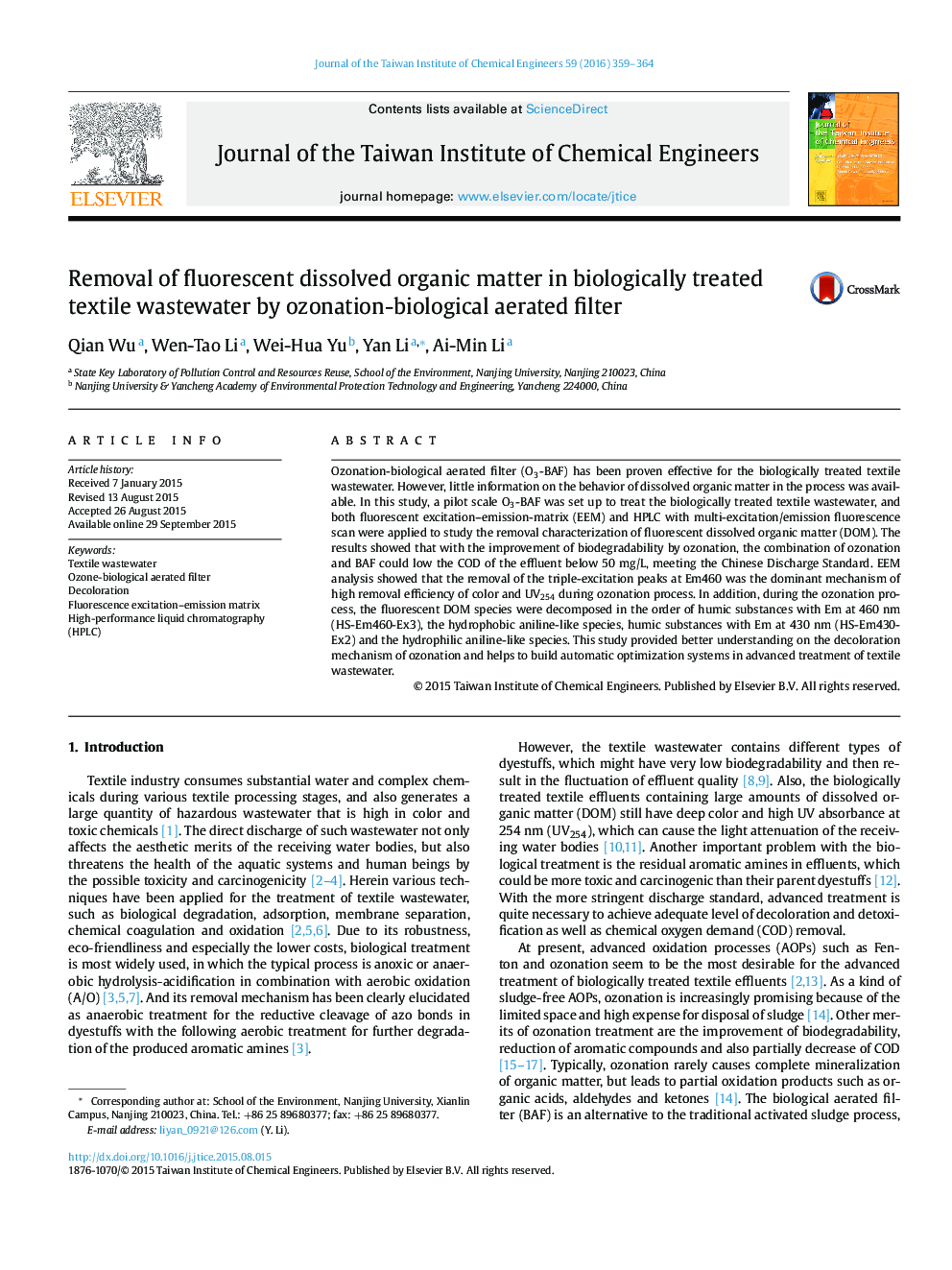| کد مقاله | کد نشریه | سال انتشار | مقاله انگلیسی | نسخه تمام متن |
|---|---|---|---|---|
| 690557 | 1460415 | 2016 | 6 صفحه PDF | دانلود رایگان |
• The optimal ozone dosage is in the range of 30–40 mg/L.
• The effluent quality of O3-BAF process meets the Chinese Discharge Standard.
• Substances with triple-excitation peaks at Em460 contribute the color and UV of secondary effluent.
• Ozonation effectively decomposes the substances with triple-excitation peaks at Em460.
• Hydrophilic aniline-like fluorescence is recommended for automatic optimization of ozone dose.
Ozonation-biological aerated filter (O3-BAF) has been proven effective for the biologically treated textile wastewater. However, little information on the behavior of dissolved organic matter in the process was available. In this study, a pilot scale O3-BAF was set up to treat the biologically treated textile wastewater, and both fluorescent excitation–emission-matrix (EEM) and HPLC with multi-excitation/emission fluorescence scan were applied to study the removal characterization of fluorescent dissolved organic matter (DOM). The results showed that with the improvement of biodegradability by ozonation, the combination of ozonation and BAF could low the COD of the effluent below 50 mg/L, meeting the Chinese Discharge Standard. EEM analysis showed that the removal of the triple-excitation peaks at Em460 was the dominant mechanism of high removal efficiency of color and UV254 during ozonation process. In addition, during the ozonation process, the fluorescent DOM species were decomposed in the order of humic substances with Em at 460 nm (HS-Em460-Ex3), the hydrophobic aniline-like species, humic substances with Em at 430 nm (HS-Em430-Ex2) and the hydrophilic aniline-like species. This study provided better understanding on the decoloration mechanism of ozonation and helps to build automatic optimization systems in advanced treatment of textile wastewater.
Figure optionsDownload as PowerPoint slide
Journal: Journal of the Taiwan Institute of Chemical Engineers - Volume 59, February 2016, Pages 359–364
